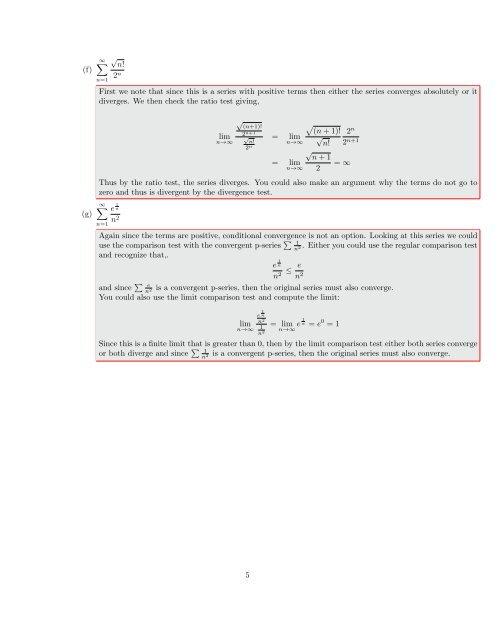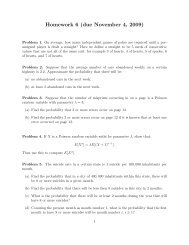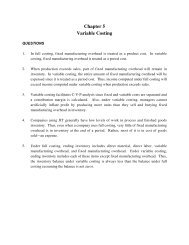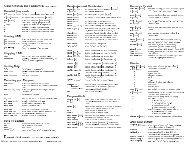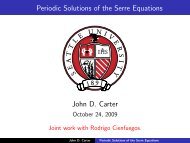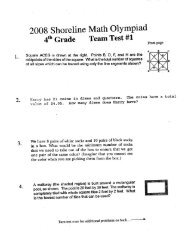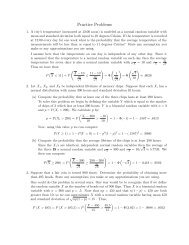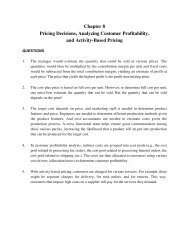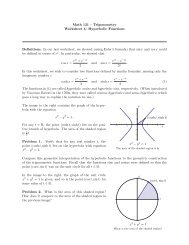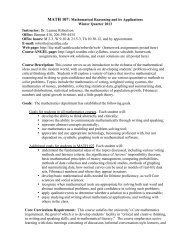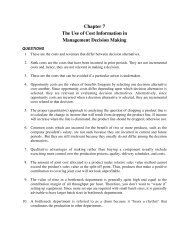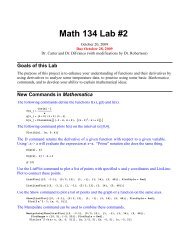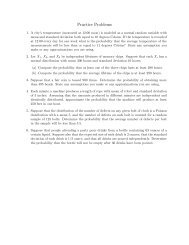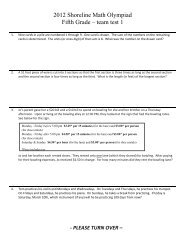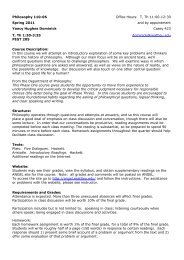Practice Problems Exam 2 Solutions
Practice Problems Exam 2 Solutions
Practice Problems Exam 2 Solutions
You also want an ePaper? Increase the reach of your titles
YUMPU automatically turns print PDFs into web optimized ePapers that Google loves.
(f)√ ∞∑ n!n=12 nFirst we note that since this is a series with positive terms then either the series converges absolutely or itdiverges. We then check the ratio test giving,(g)limn→∞√(n+1)!2√ n+1= limn!n→∞2 n= limn→∞√(n + 1)!√n!2 n2 n+1√ n + 1= ∞2Thus by the ratio test, the series diverges. You could also make an argument why the terms do not go tozero and thus is divergent by the divergence test.∞∑n=1e 1 nn 2Again since the terms are positive, conditional convergence is not an option. Looking at this series we coulduse the comparison test with the convergent p-series ∑ 1n. Either you could use the regular comparison test2and recognize that,.e 1 nn 2 ≤ e n 2and since ∑ enis a convergent p-series, then the original series must also converge.2You could also use the limit comparison test and compute the limit:limn→∞e 1 nn 21n 2= limn→∞ e 1 n = e 0 = 1Since this is a finite limit that is greater than 0, then by the limit comparison test either both series convergeor both diverge and since ∑ 1nis a convergent p-series, then the original series must also converge.25


